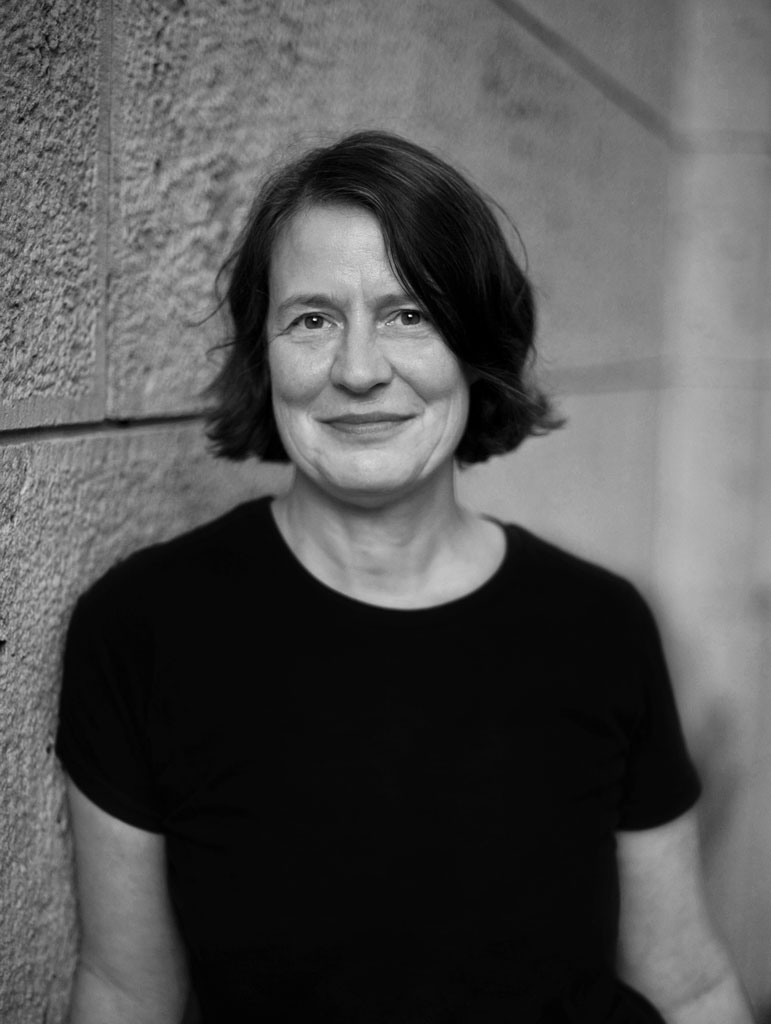The Roland Prize for Art in Public Space 2018 goes to Michaela Melián (1956). The artist and musician lives in Munich and Hamburg, Germany.
The jury explains the decision as follows:
“Michaela Melián was one of the first to occupy virtual space as a site for artistic interventions. One of her main fields of work is the public space – next to drawings, hand-sewn pictures, installations as well as music. She is a visual artist, audio playwright, solo musician and member of the band FSK. The topics she tackles artistically are as diverse as her interests: Body and gender relations, politics of memory and German history. Melián’s broadly scoped artwork continuously addresses sociopolitically and historically relevant questions.
Melián’s work in public space is manifold. Next to almost classic forms of art like installations, performance, and murals, she draws on audio plays, readings and sound experiences brought through radio and internet. This multi-layered approach allows her to extend the (real) public space with the virtual space. In this way, her acoustic memorial to the victims of National Socialism in Munich, Memory Loops, connects real places with their history and individual fates – forming a virtual (and invisible) web that will always be a part of the city.
Migration, the persecution of Jews, and National Socialist tyranny are important topics in Melián’s oeuvre. Based on extensive research, Melián develops innovative ways to deal with these topics and at the same time designs a new culture of remembrance.
Lastly, Michaela Melián’s pop-cultural aesthetics succeed to target a younger audience.”

Memorial site Ulrichsschuppen
Michaela Melian, 2024
The Ulrich warehouses, named after the businessman Ulrichs who built them in the early 20th century for his shipping business, served from 1942 until the end of World War II as an internment and forced labor camp for French and later Soviet prisoners of war. These prisoners were compelled to work in the Bremen ports. The camp, located in the Bremen timber and factory port in the area of Revaler Strasse / Memeler Strasse in Walle, is listed in a Gestapo evacuation list from June 1944. This list includes over 200 internment camps, 40 of them in the west of Bremen alone. The exact number of forced laborers and forced labor accommodations in Bremen remains unknown today, but estimates suggest up to 75,000 people, including prisoners of war and concentration camp inmates.
After World War II, the internment camp was largely forgotten, and the warehouses were used again for storage. In 1989, wall drawings presumably created by French prisoners of war in 1942/43 were discovered in the two warehouses, thanks to the personal contacts of former Soviet and French prisoners of war with peace-politically engaged residents of Bremen. These 13 wall drawings, which depict life in the camp, were preserved and are now exhibited in various institutions, including the Bremen State Archive, the State Office for Monument Preservation, and the Port Museum in Speicher XI.
In subsequent years, historians from the digital Bremen Heimatarchiv at the Walle Cultural Center continued researching forced labor in the Bremen port and specifically the Ulrich warehouses, ensuring that this history was not forgotten.
In 2018, the Braker company J. Müller Weser GmbH & Co KG acquired the old warehouses to demolish them and use the site for container storage. With this demolition, the last physical traces of their history were lost. This raised public concern about how to preserve the historical significance of the site while adapting it for modern economic needs.
In the same year, artist Michaela Melian, known for addressing socially relevant questions, including German history and its culture of remembrance, was awarded the Roland Prize for Art in Public Space. Melian employs a variety of media, including installations, murals, radio plays, and internet-based works. Her approach involves extensive research, uncovering neglected references and overlooked connections in history.
Subsequently, the Bremen Sculptor Prize Foundation invited her to create an artwork on the subject. The resulting piece is located where one of the Ulrich warehouses once stood. J. Müller supported the project, providing parts of its property for the artwork. They recreated an original entrance facade to scale, but laid it horizontally on the ground. The bricks used correspond to the old imperial format from the original warehouses. Surrounded by towering containers, the flat-lying facade forms a stark contrast, symbolizing both the historical site and its current use. An information sign with a QR code links viewers to further details about the Ulrich warehouses and forced labor in the Bremen ports during World War II.
digitales-heimatmuseum.de/gedenkort-lager-ulrichsschuppen/
Kulturhaus Walle Brodelpott

